Freeman Gosden and Charles Correll Created Amos 'n' Andy
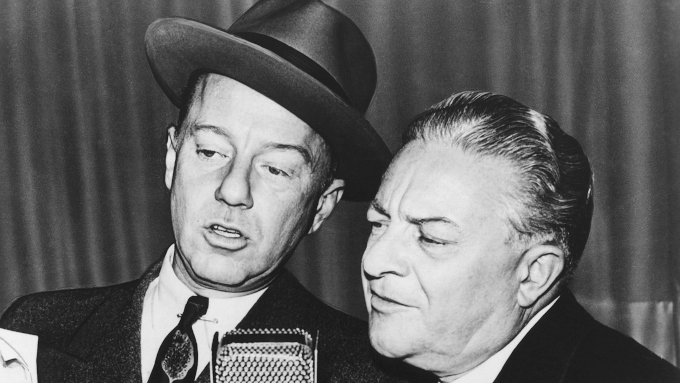
Amos 'n' Andy are two of the best known radio characters in America, and in the last six months -- the time they have been on the National Broadcasting Company networks -- they have made radio history in broadcasting at least 150 times, which is the equivalent of three years on the air for an ordinary program.
Amos 'n' Andy operate the Open Air Taxicab Company in Harlem. Each night a microphone picks up the highlights of their day as revealed in their discussions with their associations. Their business ventures, their amusements, even their affairs of the heart, are told in their conversations. The story goes on and on, and it has been asserted that if you listen in three nights in succession, you'll be an Amos 'n' Andy fan. The program is the first daily comic strip on the air.
Amos 'n' Andy are, in very private life, Freeman F. Gosden and Charles J. Correll. Gosden is Amos and Correll is Andy. Correll was born in Peoria, Illinois, and grew up with the ambition to become an actor. Gosden, a native of Virginia, was an actor when the two met in North Carolina almost eight years ago. They became partners and for a while traveled about staging amateur revues for Junior Leagues and other organizations. Then they teamed together in a theatrical company.
In 1925 they appeared for the first time before the microphone. In 1926 they introduced Sam 'n' Henry to the radio audience. Two years later they created Amos 'n' Andy, popularizing them throughout the midwest. In 1929 NBC, on the lookout for outstanding radio talent, signed them up and subsequently put them on the air under the sponsorship of Pepsodent toothpaste.
Not even the sponsors realized how popular they were until a strange thing happened. When Amos 'n' Andy changed from the Columbia Broadcasting System to the NBC network, their program was scheduled for 11 p.m. EST. Parents and children protested. It was too late for the youngsters and the youngsters who were Amos 'n' Andy fans numbered in hundreds of thousands.
It was then arranged to present the pair at 7 p.m. in the evening, in order that youngsters might listen in. Then the squall broke. Seven p.m. Eastern time means 6 p.m. Central, 5 p.m. Mountain and 4 p.m. Pacific. Fans who had become interested in the adventures of Amos 'n' Andy found that they would either have to give up their jobs or give up Amos 'n' Andy.
The storm broke in Denver, where there was virtually a mass meeting of irate listeners. Thousands upon thousands of letters and telegrams of protest were received by NBC and the sponsors. Something had to be done. The result was that a precedent was established in radio. Amos 'n' Andy continued to go on the air at 7 p.m. Eastern time, but only in the Eastern time zone. The same evening they went on the air over a Central and Western network at 11:30 p.m. This proved to be the solution to the problem, and while it cost more money there seemed to be no other way out.
Only the president is considered to have right-of-way over Amos 'n' Andy. When it became necessary to eliminate the program for an evening in order to rebroadcast Big Ben in London on New Year's, there were protests. Any rumor that Amos 'n' Andy are going off the air is followed by a flood of letters. Once when the program failed to go on, it was necessary to have the continuity for that night printed in newspapers.
What is the fascination of the program? Smart showmen declare it is the continuity of interest. They point to newspaper comic strips as an example of the same technique.
Correll and Gosden have ideas of their own. "It isn't a wise-cracking program," Correll said in discussing their success. Incidentally both men are somewhat amazed by it all. "People don't listen because of the jokes that are told. In fact, the program at times has a decided touch of pathos. Amos 'n' Andy are very human. They have more than their share of faults and they have many likeable characteristics. They are always blundering into scrapes and getting out of them. In other words, they are doing what anyone is likely to do under the same circumstances. The comedy is human."
From Radio News, April 1930
With Canada's Mounted Dramatized on Radio by T. Morris Longstreth
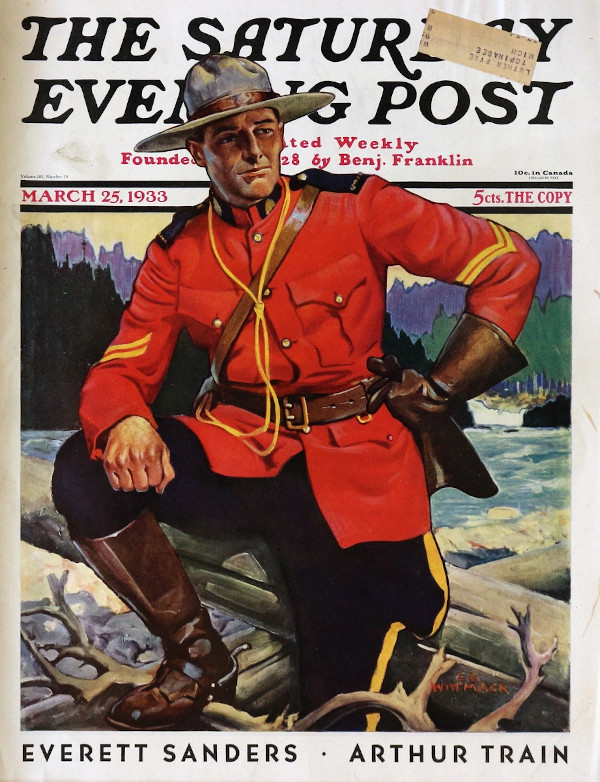
The real story of the Canadian Royal Mounted Police, written by the official historian of the group that always gets its man, will be dramatized in a new series of programs to begin over an NBC network this Monday at 9 p.m.
T. Morris Longstreth, who claims the distinction of being the only person outside the organization ever to have been granted access to complete records, will write the continuity for the program, to be known as With Canada's Mounted. Official permission for use of the facts contained in each manuscript was necessary for the series could be started, according to the program sponsor, the Canada Dry Ginger Ale Company.
Each broadcast will be a complete story in itself, dealing with the inside history of some famous Canadian crime or criminal. The initial show tells how a famous forger was run to earth. The title is "The Case of Ernest Cashell."
Longstreth, author of Sons of the Mounted Police and The Silent Force, has spent years delving into the files of the organization about which he writes.
From Radio Guide, Jan. 10-16, 1932
Morris Littmann Brought the World Mountainville True Life Sketches
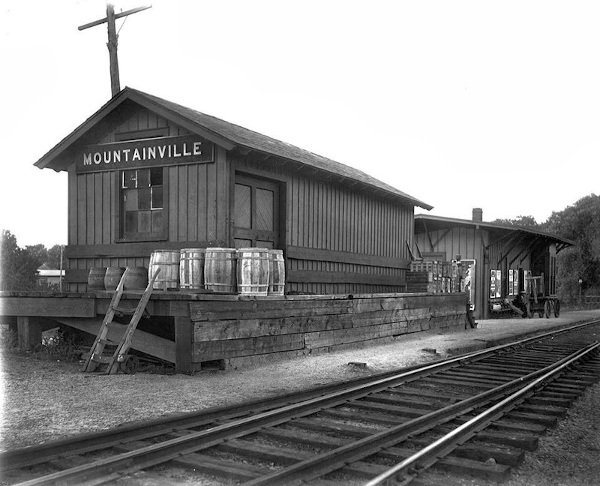
Out "thar" in the hills lies Mountainville. It is an ordinary village, nothing unusual about it -- it is just Mountainville! So typical was this quiet little hamlet nestled way up in the hills that Morris Littmann, owner of the Littmann Stores in New York City, sought to give the public in general a chance to see into this homey clump of houses and little businesses.
Littman spent his last summer's vacation in Mountainville to get the trend of life there. Upon his return to the metropolis early in the fall he conferred with Yolande Langworthy, the noted radio playwright, and she began the writing of a series of sketches built around the actual people of Mountainville. So it was that the Mountainville True Life Sketches were born.
For her players Langworthy called upon four members of the dramatic department of the Columbia System. Ten juvenile actors and actresses were selected from theatrical ranks after an exhaustive research for the proper types of the various parts.
The cast set, the company went into rehearsal and shortly announced the premiere of Mountainville. Mountainville did not "click" the first night, as the theatrical critics would have put it. It went on for four weeks with little or no attention. Then all of a sudden -- the way that these miracles in radio happen, the way that genius is discovered -- Mountainville hit the innermost recesses of hard-boiled New York's heart. Mountainville was widely acclaimed by mothers, fathers and their children from five to fifty years of age.
Littman, amid flowers in his private office, sat back and smiled.
Not satisfied with the mere success of his drama, Littman had another plan which, when worked out, would bring even more entertainment to his radio public. His idea was a Tiny Tots Theater of the Air. A miniature theater -- stage, orchestra pit, seats for the audience and all, even to the spotlights -- was erected in the world studio at CBS headquarters especially for Mountainville.
So large is the audience every week seeking admittance to the Tiny Tots Theater of the Air that Littman says he will build a large radio theater atop his new building on Broadway, now under construction. This, he asserts, will be opened to the public to witness the actual broadcasting of the Mountainville plays each week.
Bill Schudt Jr. in What's On the Air, February 1930
Jolly Joe Kelly Flooded with Letters from Pet Pals
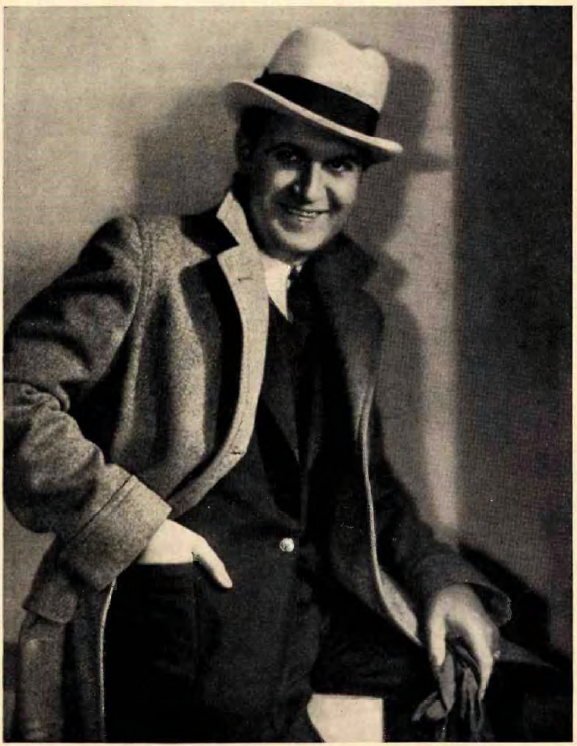
"Tie a little string around your finger, so you'll remember me."
Thus Jolly Joe Kelly to his Pet Pals each morning at 7:30 a.m. CST. And throughout the country, Joe's Palsie Walsies do remember him.
From Tennessee to Ontario and from West Virginia to North Dakota, untold thousands of children start their days with Jolly Joe. That they love him goes without question. They write him wagonloads of mail. Through Joe's program, they exchange pets of all kinds ranging from parrots to shetland ponies.
They save their pennies to buy their mothers Christmas gifts; they write to unfortunate or ill fellow Pet Pals; they follow Joe's various sets of rules for conduct during the week. They show the keenest interest in Joe's three parts: Polly, the parrot; Scamper, the dog; and Whiskers, the kitten, which all appear with Joe each morning.
Testimony concerning the effectiveness of Jolly Joe's suggestions is found in letters from grateful mothers hailing his "Keep the Tablecloth Clean Week" or his "Pickup Parades." These are definite aids in housekeeping for busy mothers.
Joe's program, besides pickup parades, regularly includes dressing races in the morning limited to five minutes, community singing, the official birthday song each day, and stories of animal and pet heroism.
The loyalty of Jolly Joe's Pet Pal Club members was never more strikingly demonstrated than in the case of little Grace Erickson, 11, of Soldier's Grove, Wisconsin. Grace was a "stay at home pal" who had never left her bed.
When Joe told his Pet Pals about Grace, the result was amazing. From every corner of the country and from Canada and Mexico came cards and letters for Grace.
Packages, too, began arriving. From Fort Worth, Texas, came three dolls and a half-dozen handkerchiefs. The Girl Scouts of Newcastle, Indiana, each hand painted a Christmas card for Grace. A Sunday school in Kansas pieced a quilt.
From far and near came remembrances of all kinds under her room nearly overflowed with presents. Jolly Joe took up a collection and sent her a doll's wardrobe trunk. She received a total of 229 pennies from Pet Pals. A mother in Rochester, Indiana, sent her a radio so she could "join" Joe's club.
In all Grace received about 1,200 letters and postcards, a stack of storybooks, 50 handkerchiefs, several rings, bracelets and necklaces and 40 dolls.
Here's the Jolly Joe poem so many of you have asked for. It was sent to Joe Kelly by Mrs. A. P. Freeman of Ohio City, Ohio.
Put Off Town
Did you ever go to Put Off Town,
Where the houses are old and tumbled down,
And everything tarries and everything drags,
With dirty streets and people in rags?On the Street of Slow lives old man Wait
And his two boys named Linger and Late,
With unclean hands and tousled hair,
And a naughty little sister, named Don't Care.Grandmother Growl lives in this town,
With her two little daughters called Fret and Frown.
And old man Lazy lives all alone
Around the corner on Street Postpone.Did you ever go to Put Off Town
To play with the girls, Fret and Frown?
Or go to the home of old man Wait
And whistle for his boys to come to the gate?To play all day in Tarry Street,
Leaving your errands for other feet,
Is the nearest way to this old town,
To stop or shirk or linger or frown.
From Stand By, February 16, 1935
Jean Hersholt and Don Ameche Star in Sins of Man
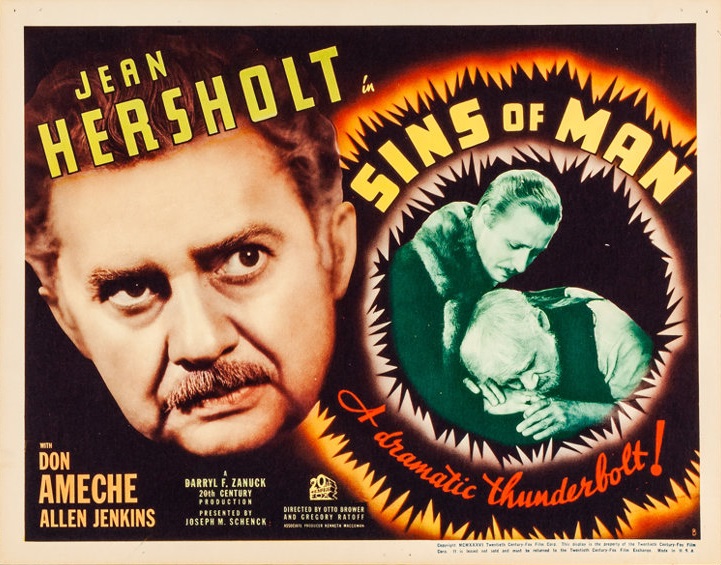
It draws a parallel between the patience of Job and the patience of a Tyrolean church sexton, but Sins of Man will be regarded by many not as cinema proof of the infinite wisdom of things, but only as a picture in which Jean Hersholt triumphs over a draggy, overly sentimental script. And the many would be right.
There is, of course, the qualifying thought that Hersholt's performance in Sins of Man makes the film real, believable and important. So important, in fact, that we can easily come to accept that infinite wisdom of things which the photoplay asks us to accept.
Sins of Man is on a par with those pathetic productions in which Emil Jannings used to suffer so nobly: those films in which our greatest character actresses take delight in appearing. The religious theme of the current picture is not stressed so heavily that it overshadows what is, after all, the stereotype tale of a simple soul who sinks exceedingly low, only to be uplifted by good fortune and good faith.
The Tyrolean bell-ringer is a familiar of ours. We recognize him in any guise, and under any adverse circumstance. This time, his eldest son is driven from home because he wants to be an aviator; his youngest son is born deaf. The flyer dies; the youth disappears during the war and the father winds up in a Bowery flophouse to be jeered by its occupants.
He hears, in time, the cheerful tolling of his own beloved church bells, incorporated in the composition of a young Italian musician. Seeking out the man, the bellringer turned sandwich man discovers his own long-lost son, whose deafness has been cured by the detonations of the war-time shells which had razed their home.
We might quibblingly ask just how this once-deafened youth could remember the sound of church bells he had never heard. But the innate beauty of the symphony in which those bells are heard, and the dramatic necessity for that symphony, make the question unimportant.
Sins of Man is not, as might be imagined, an overwhelming production. It has been stretched far beyond its deserved length, and its co-directors have striven too valiantly to evoke audience tears. On the other hand, they never once become maudlin.
Hersholt, in the major role, makes the film a beautiful, heart-warming affair. His every appearance is so perfectly right, it seems a pity that the script is not so strong as it should have been.
Don Ameche, a newcomer to the screen, is effective in a double role. He first appears as the flyer; later as the musician. In the latter portrait, he is superb. It is easy to predict a brilliant screen future for this gentlemen whose performance so impressed his company that he is re-introduced to us at the close of the film.
Allen Jenkins is refreshingly different in a minor role, and bits have been entrusted to J. Edward Bromberg, Ann Shoemaker, Fritz Lieber and others.
Seymour Roman in the Brooklyn Eagle, June 19, 1936
Related Stories:
- Don Ameche's Lucky Break in 1930
- The Marriage of Don Ameche and Honore Prendergast
- Four Radio Shows Hired Les Tremayne to Replace Don Ameche
Radio Announcer Reed Browning Makes a Spectacle of Himself
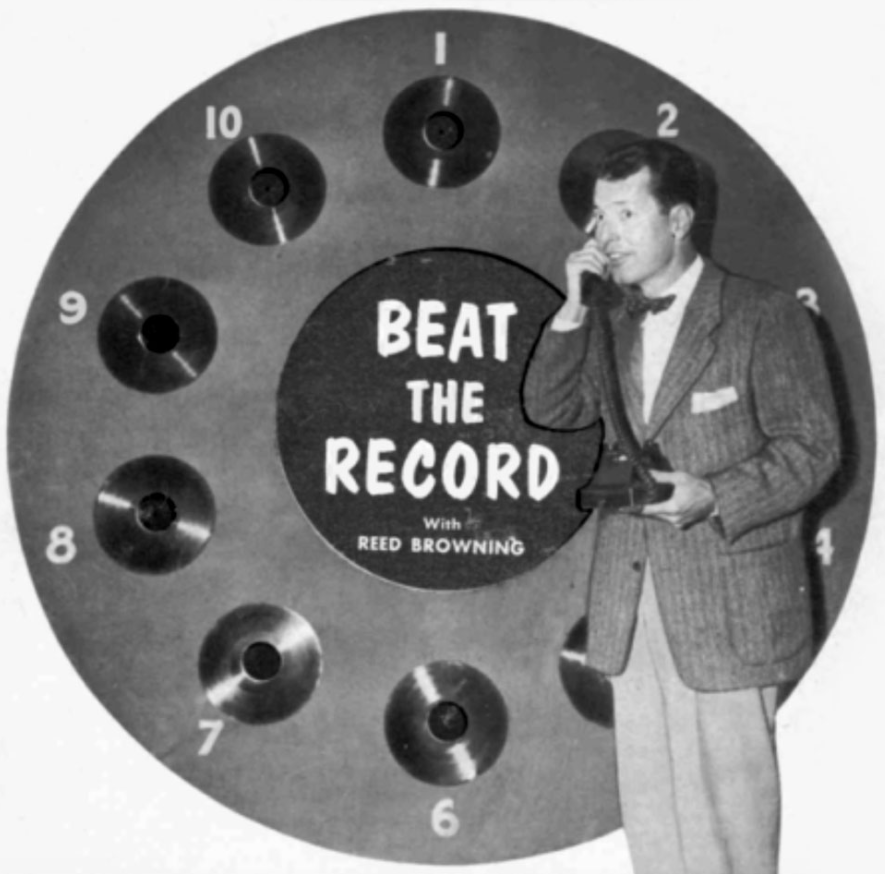
Folks visiting Hollywood -- or those who live there -- have three easy and pleasant ways to meet one of the friendliest and most cheerful emcees in show business, Reed Browning. Anyone appearing in the vicinity of Sunset and Vine any weekday morning or afternoon is quite apt to become an active part of Reed's two all-around-good-fun shows: Beat the Record, heard locally over station KABC, or the Reed Browning Show, heard over the ABC network.
Both programs offer a delightful fare of music, spontaneous fun and prize quizzes, and feature popular performers such as Rex Koury, Art and Dotty Todd and Ronnie Kemper. If, by chance, visiting firefighters miss either of these happy sessions, they can drop by the famous Cocoanut Grove and join Reed in his evening coast-to-coast Cocoanut Grove Party.
If Reed's face looks familiar and his voice sounds the same, it is undoubtedly because this busy emcee has appeared on a stream of radio and TV shows, from the Breakfast Club and Philco Hall of Fame to the Jack Owens Show and Crusade in Europe.
Originally, Reed had wanted to be a trumpet player, but while still a student in Decatur, Illinois, his football activities prevented him from playing in the band. Hence, his musical career ended. As an English major at the University of Illinois, Reed became interested in radio, so, after graduation, he sent records of his voice to a host of radio stations. One of these was station KGMB in Honolulu. On the strength of his long-distance audition, the station hired Reed as an announcer and emcee.
In short time, he became a tremendous favorite with the local populace and was affectionately known as "Unka Beel." He also made a hit with an attractive young actress named Laurel Ensminger who was appearing in a play in Honolulu and whom Reed soon took as his bride. After two years in the land of swaying palms, Reed and Laurel returned to the States where he got a job with station KYA in San Francisco.
A year later, NBC approached him. During an ensuing interview, Reed -- whose real name is Bill Livesay, was told by the big boss, "The name Livesay will have to go." Anxious to get the job, Reed got together with friends and came up with Reed Browning. Months later, the NBC boss met Reed at an office party and asked why he'd changed his name. "Because you told me to," Reed replied. "Oh," laughed the boss, "I was only kidding. We were going to hire you anyway."
When NBC was split and the American Broadcasting Company was formed, Reed was sent to Hollywood as a member of the ABC staff. For the next few years, nothing spectacular happened to Reed's career. Then, recently, he bought himself a pair of horn-rimmed glasses. From the day he donned the specs, his career has skyrocketed.
Says Reed, "Until I bought a pair, I had only one radio show. Now ABC has suddenly discovered, after knowing me for a dozen years, that I am a composite of Robert Q. Lewis, Bill Cullen, Steve Allen and Dave Garroway. So they've given me the big build-up as California's answer to those four guys."
While success has become Reed's business byword, at home, in North Hollywood, he continues to pursue his quiet, easygoing way of life with Laurel and their youngsters: Wendy, 13; Billy, 11; Kenneth, 6; and Elizabeth Anne, who is one. The Browning backyard houses a much-used swimming pool, which Reed helped to build, and an outdoor barbecue, a family favorite. While others concentrate on semi-tropical vegetation, the Brownings make a hobby of keeping their place as "Eastern" as possible, to remind them of Illinois. Reed enjoys gardening and "fussin' and fixin'" around the house and is also a ham radio operator.
The Browning home is situated just 10 minutes from the ABC studios on Vine Street. This is a convenience Reed enjoys to the fullest, for he hates traffic. But what is more important, Reed loves people -- and there's no doubt of how much folks far and wide love Reed. He's a spectacular, spectacled favorite.
From TV Radio Mirror, November 1954
Obituary for Radio Drummer Roy C. Knapp
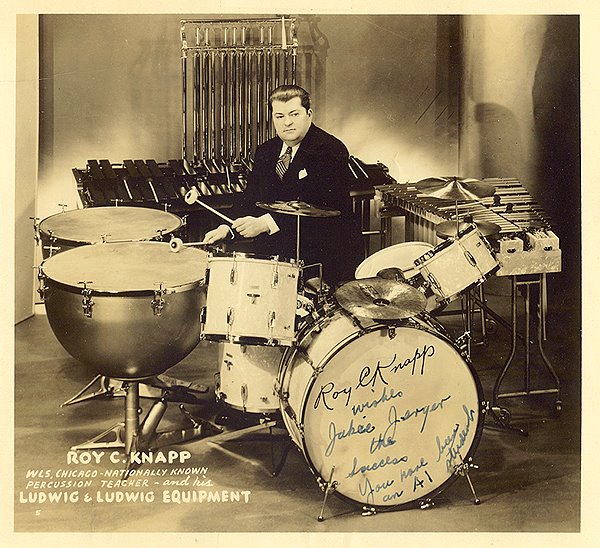
Roy C. Knapp, a network orchestra musician during radio's golden area in Chicago and a highly respected percussion teacher in the city for decades, died June 16, 1979, at Northwestern Memorial Hospital in Chicago. He was 87. The cause of death was not released.
Knapp was a longtime resident of Chicago's Near North Side. He was born on Oct. 26, 1891, in Waterloo, Iowa, where his father operated the town's first movie theater. Knapp could play several musical instruments and when the drummer for the theater's orchestra became ill, Knapp filled in for him. The experience inspired him to pursue music as a career.
The young stickman moved to Chicago in his twenties, becoming a sought-after studio musician skilled as a drummer, percussionist and xylophone soloist. He then extended his craft by becoming a teacher whose students included the jazz drummers Gene Krupa, Dave Tough, George Wettling and Louie Belson. He was a longtime orchestra member on shows broadcast on WLS.
In 1938, Knapp and his wife opened the Roy C. Knapp School of Percussion in Chicago at 509. S. Wabash Avenue. Ads proclaimed the Knapp school of music as "the cradle of celebrated drummers," offering students tutelage in the skills needed to join a "top flight" radio, television, theater or concert orchestra.
In addition to his performances for radio and movies, Knapp played the drums on the National Barn Dance from 1923 to 1960. He also played on Chicago's radio program The Breakfast Club. Though he was retired as a performer he still offered private lessons at the time of his death.
A Chicago Tribune obituary lists his survivors as a daughter, Dorothy Law; sons Donald Knapp and James Knapp; seven grandchildren and four great-grandchildren.
Related Stories:
Top 10 Articles
- The Marriage of Don Ameche and Honore Prendergast
- The Night Arthur Godfrey Fired a Singer On Live Radio
- Early Radio Announcers Invented Their Profession in the 1920s
- The Mythical Town of East Tincup, Colorado
- The Earliest Radio Shows of the 1920s
- The Great Radio Detectives of the 1950s
- The Home Life of Jack Benny
- Why Vladimir Horowitz Stopped Performing in the 1930s
- Judy Canova: The Queen of Hillbilly Hokum
- Some of the Unsung Heroes of Radio

